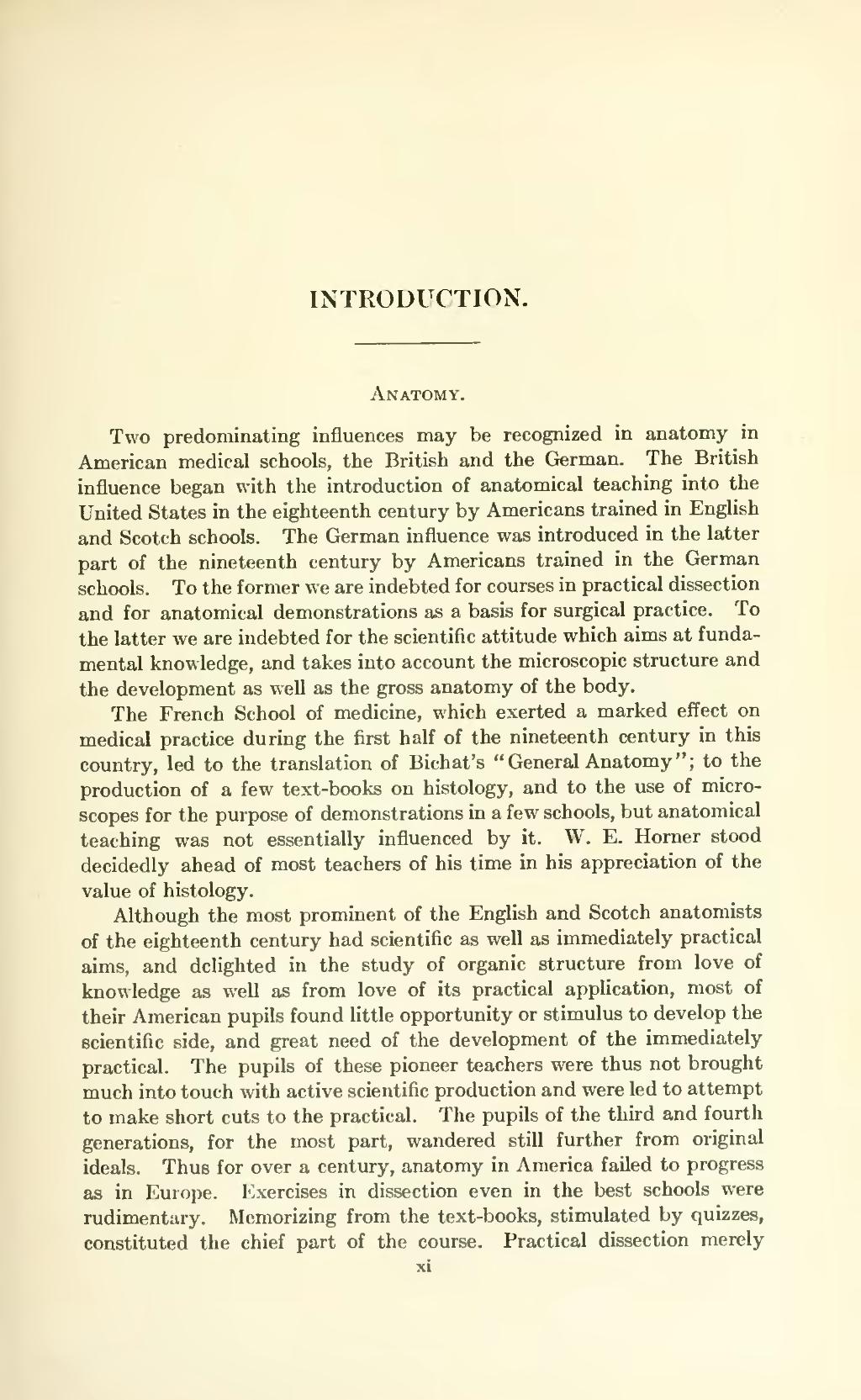INTRODUCTION.
Anatomy.
Two predominating influences may be recognized in anatomy in
American medical schools, the British and the German. The British
influence began with the introduction of anatomical teaching into the
United States in the eighteenth century by Americans trained in English
and Scotch schools. The German influence was introduced in the latter
part of the nineteenth century by Americans trained in the German
schools. To the former we are indebted for courses in practical dissection
and for anatomical demonstrations as a basis for surgical practice. To
the latter we are indebted for the scientific attitude which aims at funda-
mental knowledge, and takes into account the microscopic structure and
the development as well as the gross anatomy of the body.
The French School of medicine, which exerted a marked effect on medical practice during the first half of the nineteenth century in this country, led to the translation of Bichat's " General Anatomy " ; to the production of a few text-books on histology, and to the use of micro- scopes for the purpose of demonstrations in a few schools, but anatomical teaching was not essentially influenced by it. W. E. Horner stood decidedly ahead of most teachers of his time in his appreciation of the value of histology.
Although the most prominent of the English and Scotch anatomists of the eighteenth century had scientific as well as immediately practical aims, and delighted in the study of organic structure from love of knowledge as well as from love of its practical application, most of their American pupils found little opportunity or stimulus to develop the scientific side, and great need of the development of the immediately practical. The pupils of these pioneer teachers were thus not brought much into touch with active scientific production and were led to attempt to make short cuts to the practical. The pupils of the third and fourth generations, for the most part, wandered still further from original ideals. Thus for over a century, anatomy in America failed to progress as in Europe. Exercises in dissection even in the best schools were rudimentary. Memorizing from the text-books, stimulated by quizzes, constituted the chief part of the course. Practical dissection merely
